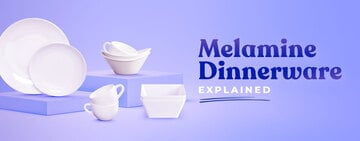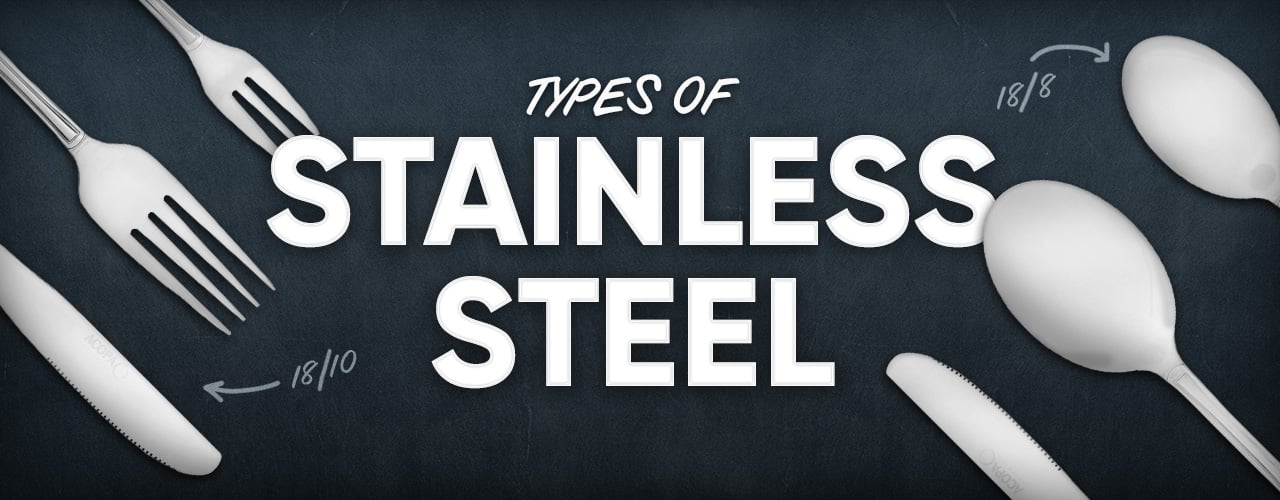
Different Types of Stainless Steel
Last updated on 9/18/2023Stainless steel is a versatile and widely used material in the commercial foodservice industry. It is known for its durability, corrosion resistance, and aesthetic appeal, making it a popular choice for a variety of applications. Understanding the different stainless steel grades and their uses is critical for selecting the right material to meet your commercial needs. Whether you require high corrosion resistance, strength, formability, or a combination of properties, there is a stainless steel grade suitable for your specific application.
Shop All Stainless Steel CookwareStainless Steel Grade Systems
When it comes to selecting the right stainless steel equipment for your restaurant kitchen, understanding stainless steel grade systems is vital. Stainless steel grade systems provide a standardized way to identify and categorize stainless steel based on its chemical composition and physical properties. This information helps you determine the best stainless steel material for your specific commercial application. Below, we discuss two of the most important stainless steel grade systems in a commercial kitchen environment:
SAE Grades
The SAE grade system consists of three digits, with each digit representing different characteristics of the stainless steel alloy. The first digit indicates the series or type of stainless steel, such as 2 for austenitic stainless steel or 4 for ferritic stainless steel. The second digit represents the specific alloy within the series, while the third digit indicates the carbon content of the alloy. You may also see this grading system called the AISI system, referring to the originators of this system the American Iron and Steel Institute, although it's now updated and regulated by SAE International.
Flatware Grades
Flatware grade stainless steel is commonly used in cutlery, utensils, and other foodservice items. This grade system categorizes stainless steel based on its resistance to corrosion and staining. Flatware grades are typically designated by a number, such as 18/8 or 18/10. The first number represents the percentage of chromium in the stainless steel alloy, while the second number indicates the percentage of nickel.
For example, 18/8 stainless steel contains 18% chromium and 8% nickel, making it highly resistant to corrosion and staining. On the other hand, 18/10 stainless steel contains 18% chromium and 10% nickel, offering even greater durability and shine.
Stainless Steel Types
There are over 150 varieties of stainless steel, and each of them have different properties, which is why it's vital to understand their variations. In the restaurant industry, it’s also especially important to distinguish between the various types because one type of food grade stainless steel may be better suited for a particular task.
For example, if you’re shopping for cookware that’s going to come in contact with very salty foods, a pot made with 316 stainless steel is probably better than 304 because of its superior corrosion resistance. Understanding the differences between food grade stainless steel grades and types can help you make informed decisions and purchase the best products to suit your needs.
200 Stainless Steel

What Is 200 Stainless Steel? Stainless steel in the 200 series is lower quality and less corrosion-resistant than other types. It still has its place in a commercial kitchen thanks to its affordability.
200 Stainless Steel Best Applications: Food storage containers
304 Stainless Steel

What Is 304 Stainless Steel? 304 stainless steel is the most common type used in the kitchen. It has a bright shine due to a high level of chromium and nickel. It's also very resistant to corrosion and rust, although it's susceptible to corrosion caused by exposure to salt.
304 Stainless Steel Best Applications: Kitchen appliances, internal parts, kitchen utensils, smallwares, flatware, prep tables
316 Stainless Steel

What Is 316 Stainless Steel? This is the second most common type of stainless steel, and its alloy includes an additional element, molybdenum, which increases its resistance to corrosion caused by salt and other chemicals.
316 Stainless Steel Best Applications: Kitchen equipment, hibachi grills, high-end cookware, equipment and furniture used outdoors, outdoor equipment used near the ocean
430 Stainless Steel
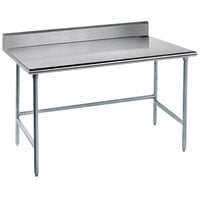
What Is 430 Stainless Steel? 430 stainless steel contains a very small amount of nickel, and it's not as corrosion-resistant as the 300 series steels. This type is also magnetic.
430 Stainless Steel Best Applications: Medium-quality flatware, prep tables, appliance doors, induction-ready cookware
440 Stainless Steel
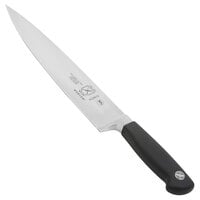
What Is 440 Stainless Steel? With a high level of carbon, 440 stainless steel is one of the strongest types used in the kitchen. Products made out of 440 stainless steel are hard, corrosion-resistant, and can stand up to wear and tear very well.
440 Stainless Steel Best Applications: High-quality chef knives, cutlery, oven door handles, internal parts
Flatware Stainless Steel Grades
This system uses ratios such as 18/0, 18/8, and 18/10 to describe the levels of nickel and chromium in food grade stainless steel. Chromium and nickel are the two most important elements for flatware, as they affect the corrosion resistance, shine, and magnetism of the steel. While this grading system is typically used to describe types of flatware, it may also be used for some stainless steel pans, pots, and other types of cookware.
13/0 Stainless Steel
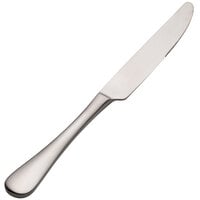
What Is 13/0 Stainless Steel? 13/0 stainless steel is used to make knives. Because this steel contains less chromium and no nickel, it's softer, allowing manufacturers to add serration to the edge.
13/0 Stainless Steel Best Applications: Fine dining restaurants, casual eateries, hotels, and banquet halls
18/0 Stainless Steel
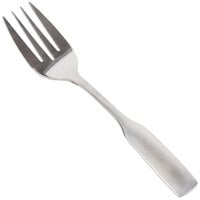
What Is 18/0 Stainless Steel? 18/0 stainless steel is a medium-quality option, and it's one of the most affordable choices. It's not as corrosion-resistant as higher flatware grades, but it's magnetic. Because it's magnetic, it can get caught by magnets in conveyor dishwashers and trash bins, helping to prevent it from being discarded.
18/0 Stainless Steel Best Applications: Dining halls, cafeterias, catering companies, high-volume restaurants, retirement homes, casual restaurants, diners
18/8 Stainless Steel

What Is 18/8 Stainless Steel? 18/8 is one of the most common types of flatware. This stainless steel has a hefty, professional feeling, and it's very corrosion-resistant. Pieces made from this stainless steel usually have some sort of decoration or design.
18/8 Stainless Steel Best Applications: Casual restaurants, upscale establishments, hotels, catering companies, banquet halls, bistros, cafes
18/10 Stainless Steel
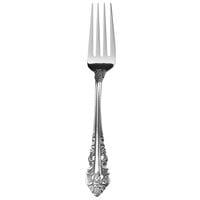
What Is 18/10 Stainless Steel? This is the highest-quality flatware you can get. 18/10 offers superior corrosion resistance. Additionally, this flatware usually has unique and interesting designs or engravings on the handles.
18/10 Stainless Steel Best Applications: Upscale restaurants, bistros, hotels, banquet halls, catering companies, country clubs
Stainless Steel Terms
When describing the properties of the different types and grades of stainless steel, there are a few key terms and elements that come up regularly. Below, we've listed the definitions of some crucial terms to know and how they relate to stainless steel.
Corrosion
Corrosion refers to the gradual deterioration of a material, such as stainless steel, due to chemical reactions to its environment. While stainless steel is known for its resistance to corrosion, it is not entirely immune. Factors such as exposure to harsh chemicals, high temperatures, and saltwater environments can still cause corrosion over time. However, stainless steel's chromium content forms a protective layer on its surface, known as a passive film, which helps prevent further corrosion.
Alloy
Stainless steel is an alloy, which means it is a mixture of different metals. In the case of stainless steel, it is primarily composed of iron, chromium, and other elements such as nickel, molybdenum, or titanium. The addition of these elements enhances the properties of stainless steel, such as its corrosion resistance, strength, and heat resistance. The specific combination and proportion of these elements in the alloy determine the grade and characteristics of the stainless steel.
Element
Elements are the basic building blocks of matter, and they play a crucial role in the composition and properties of stainless steel. The most important element in stainless steel is chromium, which provides its corrosion resistance. Chromium reacts with oxygen in the air to form a thin, invisible layer of chromium oxide on the surface of stainless steel, protecting it from further oxidation and corrosion. Other elements, such as nickel, molybdenum, and titanium, are added to stainless steel to enhance specific properties like durability, strength, and resistance to extreme temperatures.
Stainless Steel Material
Stainless steel is an alloy that offers excellent corrosion resistance, durability, and aesthetic appeal in commercial applications. The main reason stainless steel has these qualities is due to the various materials it is made up of. Materials and elements like chromium, nickel, and carbon are key in enhancing the quality of stainless steel.
1. Chromium
Chromium is an essential element in stainless steel, as it forms a thin, invisible layer of chromium oxide on the surface of the steel. This layer acts as a protective barrier against corrosion, preventing the steel from rusting and tarnishing. The higher the chromium content, the more corrosion-resistant the stainless steel becomes. For example, stainless steel with a chromium content of at least 10.5% is considered to be "stainless" and is widely used in commercial kitchens, food processing facilities, and medical equipment.
2. Nickel
Nickel enhances the corrosion resistance of stainless steel and also improves its strength and toughness. Stainless steel with a higher nickel content is commonly used in applications where high corrosion resistance is required, such as marine environments or chemical processing plants, but is still valuable in the foodservice industry.
3. Carbon
Carbon is another element found in stainless steel. It is responsible for the steel's hardness and strength. The carbon content in stainless steel can vary depending on the desired properties of the final product.
Stainless Steel Benefits
Using stainless steel in your commercial kitchen provides a lot of benefits, helping you to run a smooth and efficient operation. While the properties and strengths of stainless steel vary depending on their composition, there are a few core positives you can enjoy from using stainless steel equipment. Discover the main benefits of stainless steel below:
Corrosion Resistance
Stainless steel is highly resistant to corrosion, making it suitable for use in environments with high humidity, moisture, or exposure to corrosive substances. This resistance is due to the presence of chromium, which forms a protective layer on the surface of the steel, preventing rust and corrosion.
Hygiene
Stainless steel is easy to clean and maintain, making it ideal for applications where hygiene is crucial, such as in the food service industry. The smooth, non-porous surface of stainless steel prevents the growth of bacteria, making it a safe and sanitary choice for food preparation surfaces, utensils, and equipment.
Durability
Stainless steel can withstand extreme temperatures, making it suitable for both hot and cold environments. The material is also resistant to impact, making it less prone to dents and scratches compared to other substances.
Versatility
Stainless steel is available in various grades and finishes, allowing for customization to suit different commercial applications. Whether you need a highly polished surface for aesthetic purposes or a brushed finish for increased durability, stainless steel can be tailored to meet your specific requirements.
Aesthetic Appeal
Stainless steel has a sleek and modern appearance that adds a touch of sophistication to any commercial space. Its clean and shiny surface can enhance the visual appeal of kitchen appliances, countertops, sinks, and other fixtures.
Overall, understanding the different types of stainless steel and their applications is critical when choosing the right material for your commercial needs. Consider factors such as corrosion resistance, strength, and durability to make an informed decision. By selecting the appropriate grade of stainless steel for your specific application, you can ensure that your commercial equipment, utensils, or structures will withstand the demands of your industry and provide long-lasting performance.



